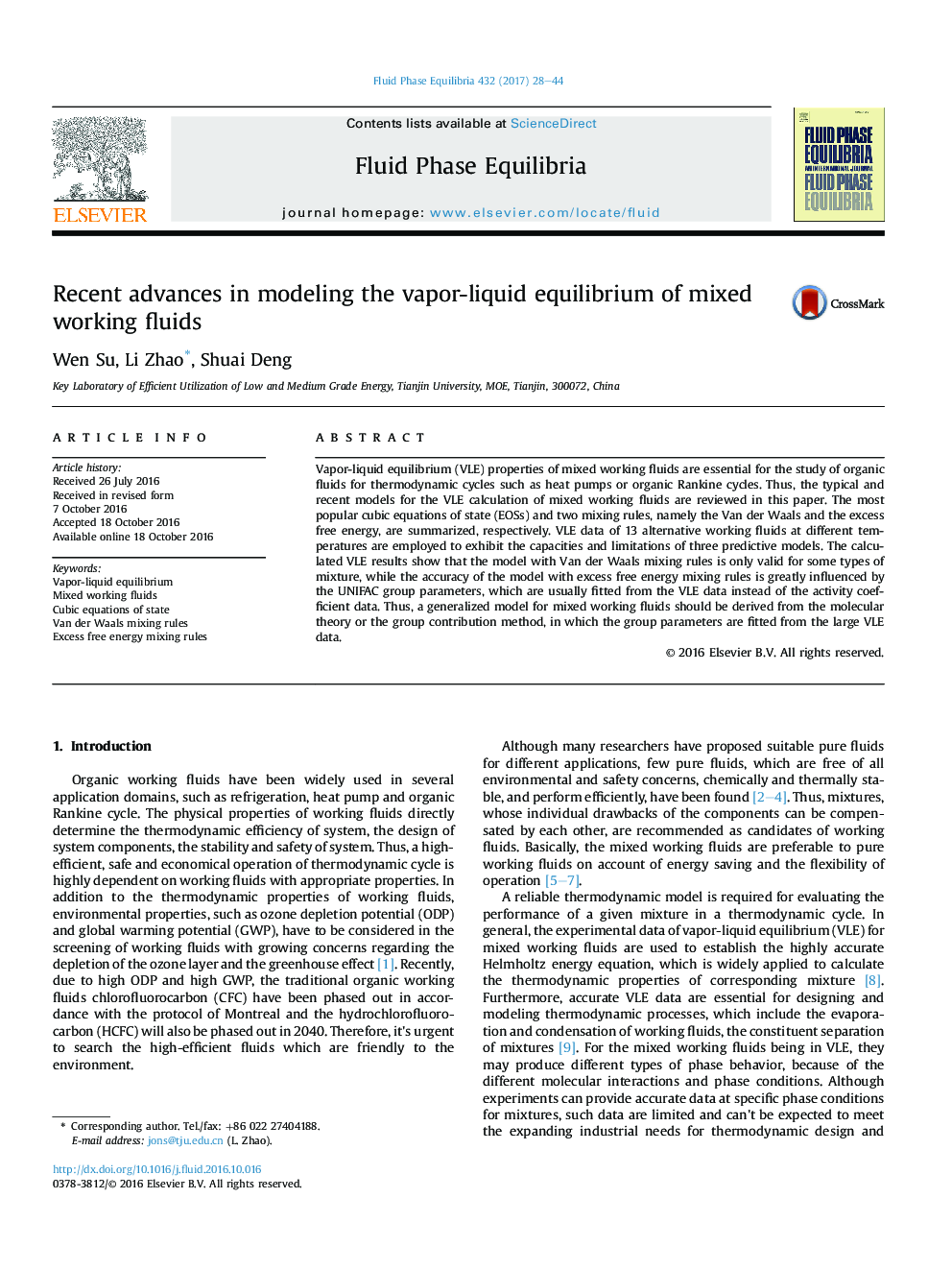| Article ID | Journal | Published Year | Pages | File Type |
|---|---|---|---|---|
| 4768108 | Fluid Phase Equilibria | 2017 | 17 Pages |
Abstract
Vapor-liquid equilibrium (VLE) properties of mixed working fluids are essential for the study of organic fluids for thermodynamic cycles such as heat pumps or organic Rankine cycles. Thus, the typical and recent models for the VLE calculation of mixed working fluids are reviewed in this paper. The most popular cubic equations of state (EOSs) and two mixing rules, namely the Van der Waals and the excess free energy, are summarized, respectively. VLE data of 13 alternative working fluids at different temperatures are employed to exhibit the capacities and limitations of three predictive models. The calculated VLE results show that the model with Van der Waals mixing rules is only valid for some types of mixture, while the accuracy of the model with excess free energy mixing rules is greatly influenced by the UNIFAC group parameters, which are usually fitted from the VLE data instead of the activity coefficient data. Thus, a generalized model for mixed working fluids should be derived from the molecular theory or the group contribution method, in which the group parameters are fitted from the large VLE data.
Related Topics
Physical Sciences and Engineering
Chemical Engineering
Chemical Engineering (General)
Authors
Wen Su, Li Zhao, Shuai Deng,
